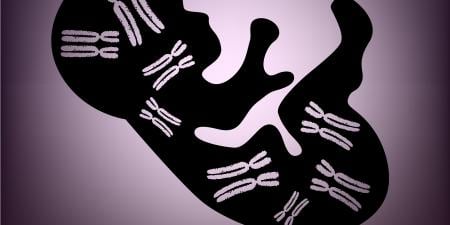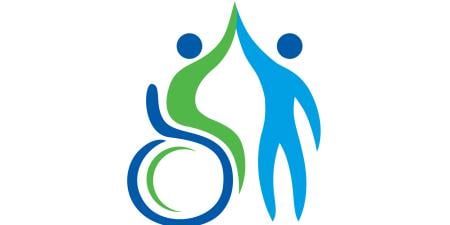Introduction
In this short commentary, we reflect on how ideas about disability intersect with prenatal technologies and what this likely means for the future landscape of reproductive medicine. In what follows, we assess the argument that prenatal technologies represent a form of “eugenics,” defined here as practices and policies designed to promote the reproduction of people with desired attributes—and, thus, avert the reproduction of people with undesired attributes (e.g., people with disabilities). The idea that the world and the people in it would be better off if everyone were born “healthy,” that is, without “defect,” is the essential principle of eugenics (translated literally as well-born). At the beginning of the twentieth century, eugenics emerged as an important ideology and social movement in the US and beyond,1 reflected most profoundly not only in the institutionalization of certain people with disability (and other social groups) but also in policies of segregation and enforced sterilization programs. Whilst the word has dropped out of favor in the US, the actual practice of eugenics remained fairly consistent in US medical services over the decades both before and after Nazi Germany’s appropriation of eugenics for its own horrifying purposes.2
We consider the idea of eugenics in the context of prenatal screening, that is, a nondiagnostic test providing information about the chance of a fetus having a condition or disease. (In contrast, a diagnostic test, such as amniocentesis or chorionic villus sampling, can establish the presence or absence of a condition in a child, although it should be noted that diagnostic tests are not 100 percent accurate and are susceptible to human error.) Increasingly sophisticated prenatal screening techniques have been embraced in scientific circles, yet disability rights groups have condemned them as devaluing certain lives and, thus, as being ethically problematic and even eugenic.3, 4 We turn our focus to noninvasive prenatal testing (NIPT), the latest version of prenatal screening for Down syndrome to be offered in the US. NIPT is used to analyze cell-free fetal DNA (cffDNA) in a pregnant woman’s blood at around ten weeks’ gestation. It can predict the chance of a fetus having a genetic condition such as Down, Edward, or Patau syndrome; the detection rate for each syndrome is reported as being around 99 percent; for example, at least 99 percent of all pregnancies in which a fetus has Down syndrome can be detected using NIPT.5 Screening for sex chromosome disorders (for example, Turner syndrome) is also possible via NIPT. Although most pregnant women will receive a lower-chance (or “lower-risk”) result, some will have a higher-chance (or “higher-risk”) result, meaning it is very likely that a fetus has a genetic condition. In such instances, diagnostic testing can validate this.
Because NIPT, in particular, has the potential to detect many different conditions and genetic variations, some argue that concerns about its “eugenic potential” may be particularly acute.6-8 That said, we focus this commentary on screening for Down syndrome (the reasons for which we offer later). In the context of Down syndrome screening, we suggest that this practice—whilst facilitating pregnant women’s decision making and helping them, in certain situations, to prevent difficult circumstances or to prepare for certain outcomes—becomes a method by which certain lives are marked as either valued or devalued—and could be, thus, considered as a matter of what Shakespeare calls “contemporary eugenics,” in that it devalues certain ways of being in the world.9 Further, we argue that the continuing development of prenatal screening technologies plays a key role in the problematic framing of people with disabilities.
The Future Landscape of Prenatal Screening: Social and Ethical Issues
NIPT intensifies long-debated issues in prenatal screening, including assessing whether “nondirective care” and “informed choice” are achieved and if screening heightens anxiety.10-18 Other social and ethical questions may also be asked of this new technology. Since NIPT is reported as having a 99 percent detection rate for some genetic conditions, how is this knowledge managed by pregnant women? Will this create added social and medical pressure to take tests—and does this affect a woman’s ability to “choose not to choose”?19 What effects does the “seeping” of NIPT into medical systems have for pregnant women? What happens to “choice” when screening is performed at earlier gestation and “risk” is diminished5? How do pregnant women understand and handle inconclusive results as well as “variants of uncertain significance” (variation in the normal sequence of a gene, the significance of which is unknown) and “incidental findings” (undiagnosed medical conditions found unintentionally)? Will NIPT fuel further anxiety among pregnant women, as reported, in relation to earlier forms of prenatal screening/testing?15, 16, 17-18, 20-22 Finally, how is NIPT implicated in already inequitable medical systems in the US and beyond?
An array of other scholars have reflected on the social and ethical issues associated with NIPT in more detail and nuance than is possible here.5-8, 23-33 We direct the reader to these excellent resources for further information. At this point, we focus on whether this form of prenatal screening constitutes a form of eugenics, defined here as techniques and policies that allow for the reproduction of people with “desired” attributes and reduce the reproduction of those with “undesired” attributes. This is hugely important in the context of NIPT since the technology has the potential to provide a diagnosis of fetal sex for clinical indications (for example, Duchenne muscular dystrophy) and single-gene disorders (for example, achondroplasia, thanatophoric dysplasia) as well as trisomies (Down, Edward, or Patau syndrome). Further, NIPT may be expanded to include next-generation sequencing or microarray testing that would make it feasible to screen for subchromosomal deletions and duplications in the fetal genome, including chromosomal imbalances too small to be detected via standard karyotyping. If this happens, who decides what will be screened for? Will all identified genetic variants be shared with pregnant women, and how will they contend with the potential production of what Bernhardt et al. call “toxic knowledge”34? Will pregnant women receive support in the form of expert counseling to digest the results of testing for a large range of genetic diseases and disorders?35 Such questions can only be answered in due course, but, for the time being, we ask whether the future landscape of prenatal screening can be considered a matter of eugenics.
A New-Genics? The Example of Down Syndrome
In order to illustrate our argument, let us consider Down syndrome, both to narrow our focus and because the condition has been connected with prenatal screening programs for many years—including NIPT. Down syndrome is a variable condition, and, although some symptoms are common, the prognosis of people with the condition remains unclear. This means that if a pregnant woman receives a prenatal diagnosis of Down syndrome, she is unlikely to receive information about the level of physical and cognitive impairment a child would have. Diagnostic tests (even at their most accurate) for conditions like Down syndrome only tell pregnant women if the fetus does or does not have the specific chromosomal marker. They do not tell women about the severity or the breadth of impairments that may follow; one fetus with a diagnosis of Down syndrome could not survive pregnancy whilst one child born with the condition could graduate from college. It is this complexity and variability, interestingly, which means that some people—including health care professionals—can hold ambiguous views and express various anxieties about prenatal screening and testing for Down syndrome, with some citing this uncertainty when claiming that screening could perhaps be considered a eugenic practice.36
This troubled relationship between prenatal testing for Down syndrome and how the condition is interpreted is complicated further when reading the accounts of parents who have children with the condition. In both empirical studies37-39 and autobiographies,40-46 mothers and fathers identify numerous difficulties—be they medical, social, familial, educational, vocational, political, or economic—associated with parenting a disabled child, but they also recount their positive experiences, recognizing their situation as one which should not always be viewed as unwanted, pitiful, or disastrous.47 Research has shown how the positive experiences of parents of a child who has Down syndrome, or some positive reflections on the condition more broadly, are not always communicated during prenatal screening consultations.36 This view has led some disability rights groups to organize campaigns against prenatal screening. For example, the “Don’t Screen Us Out” campaign was organized by an advocacy group for people with Down syndrome in light of the development of NIPT and argues that screening would have a “long-term effect on the population of the Down syndrome community and enable a kind of informal eugenics in which certain kinds of disabled people are effectively ‘screened out’ of the population before they are even born.” 48
Reflections on the way that Down syndrome is represented connect with the notion of “choice,” i.e., that pregnant women are able to choose whether to have prenatal screening or testing and, if a diagnosis is established, whether to terminate or continue a pregnancy. However, this notion of choice has been problematized for years and for several reasons.12-16, 49 The first reason is that this choice is based on what would, in other circumstances, be considered insufficient information; screening only indicates the chance of having a child with a genetic condition, and the prognosis, as touched upon above, can be uncertain. It is in this context that we should consider NIPT. Attempts at finding fetal markers in maternal blood have been made over the last 30 or more years, each heralded as about to “change everything” in prenatal testing and each ultimately not providing sufficient diagnostic accuracy to be anything other than a screening test. The screens—from nuchal fold tests for chromosomal conditions during “routine” ultrasounds through to current testing procedures—bring women into a situation in which they may have to decide whether to knowingly continue a pregnancy with a diagnosed fetus or terminate a hitherto wanted pregnancy.
Secondly, the decision to have a screen or not may be framed as a “choice,” but the pressures surrounding the choice—e.g., the services available, expectations, cultural attitudes toward disability, familial and other support—interfere with this choice being freely made. This process of starting with routine care and facing ultimate questions about the meaning and value of human life, the life of one’s potential child, is what Samerski calls “the decision trap,” that is, how engaging with genetic technologies can cause choices to become “traps” that people enter both willingly and eagerly.50 For Lippman, the rhetoric of choice is meaningless; to knowingly carry to term a baby with Down syndrome “cannot be a real option when society does not truly accept children with disabilities or provide assistance for their nurturance.”51 Indeed, the women that Rothman interviewed in her own research were often quite clear that, whilst they would not choose to end a wanted pregnancy for mild or some developmental delays, they did wish to spare their potential children the difficulties of extreme disabilities, especially in a world not providing the necessary services, assistance, and accommodations.12
Related to this point, Skotko warns that promoting “choice” as medical progress in the context of prenatal screening may lead to the “disappearance” of people with Down syndrome.52 Skotko’s argument is important to consider in light of termination statistics from around the world. A report from the National Down Syndrome Cytogenetic Register claims that in 2012 in England and Wales, 90 percent of 1,259 fetuses diagnosed prenatally with Down syndrome were terminated.53 Moreover, in England and Wales, the annual rates for termination after a Down syndrome diagnosis between 1989 and 2012 have ranged from 88 percent to 94 percent.5 In addition, 10 out of 18 European countries are reported to have an average termination rate of 88 percent after a diagnosis of Down syndrome.54 Finally, termination rates of 95 percent in certain areas of Australia55 and 74 percent in select US states are reported.5, 56
Within this context, and drawing on our claims as outlined above, one may argue that prenatal screening represents a form of eugenics and that the “choice” promised by such techniques is not necessarily a (free) choice at all. Force is not involved in prenatal screening decision making (except in presumably rare but understudied familial circumstances) but, arguably, eugenics does not require force. One can claim that even making screening available for Down syndrome and other genetic conditions is already, by definition, suggesting that they are not valued reproductive outcomes.57-59
But we do urge caution here. Some parents may undertake screening to “prepare” for what they may perceive to be an unexpected and challenging situation, meaning that the outcome is not always viewed as “unvalued” (at least by them). In addition, we argue that it is unhelpful and offensive to pregnant women and medical services or systems that they use to equate all prenatal screening and testing to eugenics as popularly understood—usually relating to Nazi Germany. Since NIPT can potentially detect a range of genetic conditions and gene deletions and duplications, it would be wrong to indulge in exaggerated hype about how NIPT and all current screening procedures translate to this kind of eugenics—and that there is some sort of “plot” to deliberately eliminate all fetuses with Down syndrome or other genetic conditions.
This is not to say, however, that a discussion about the future of prenatal screening through a lens of eugenics is unproductive. Screening and testing are unlikely ever to be separated from their eugenic roots. As such, it is fairer to use Shakespeare’s helpful distinction between “historical eugenics” (operating at the population level) and “contemporary eugenics” (operating at the level of individuals and families).9 Shakespeare’s argument is that, whilst prenatal screening and testing do not translate to the old eugenics, the practices of reproductive medicine and the context under which reproductive decisions are made, particularly with respect to problematic cultural attitudes towards disability, can undermine the capacity for free choice and can promote “eugenic outcomes.”60
Arguably, thus, screening for Down syndrome amounts to what we could call a contemporary eugenics. The race for a diagnosis for Down syndrome and other genetic conditions—often in the absence of a cure—can be seen as a commentary on which lives are valued or not. Further, the development of new and more accurate technologies contributes to the continuing negative portrayal of disability. Indeed, what frequently becomes lost in conversations about prenatal diagnostics is how disability is shaped by cultural ideas of “the normal” and a complex interplay of social, cultural, material, biological, economic, and political factors. Research also shows that there has been limited, or nonexistent, discussions of disability—and what it means to have a disability (such as Down syndrome)—to accompany the rapid growth of prenatal technology, particularly in the medical context.7, 61, 57 This will likely present problems with new technologies like NIPT, which are likely to cause the category of “normal” to diminish and the category of “abnormal” to grow.
Conclusion
We argue that prenatal screening (and specifically NIPT) for Down syndrome can be considered a form of contemporary eugenics, in that it effaces, devalues, and possibly prevents the births of people with the condition. The routinization of Down syndrome screening in many countries across the world, the US included, has ensured that the complex and controversial nature of NIPT, and technologies like it, has been muffled. We must emphasize that we do not lay the blame for the current situation at the feet of pregnant women, the medical profession, or any other social group. We are in this position due to historical and contemporary developments including—among other things—the historic institutionalization of people with disabilities, the growth of genetics, the introduction of prenatal testing for terminating conditions other than Down syndrome, the passing of certain abortion laws, the acceptability of screening as an appropriate medical practice, the medicalization of pregnancy, and the public exclusion of and discrimination against people with disabilities. It is in this context that we should critically reflect on the social and ethical issues of new forms of prenatal screening.
References
-
Wright D. Downs: The History of a Disability. Oxford, UK: Oxford University Press; 2011.
-
Kline W. Building a Better Race: Gender, Sexuality, and Eugenics from the Turn of the Century to the Baby Boom. Berkeley, CA: University of California Press; 2001.
-
Glover J. Choosing Children: Genes, Disability, and Design. Oxford, UK: Clarendon Press; 2006.
-
Parens E, Asch A. Prenatal Testing and Disability Rights. Washington, DC: Georgetown University Press; 2000.
-
Strange H. 2016. Non-Invasive Prenatal Diagnosis: The Emergence and Translation of a New Prenatal Testing Technology [dissertation]. Cardiff, UK: Cardiff University; 2016.
- Bianchi DW, Chudova D, Sehnert AJ, et al. Noninvasive prenatal testing and incidental detection of occult maternal malignancies. JAMA. 2015;314(2):162-169.
- Bryant LD, Green JM, Hewison J. Understanding of Down’s syndrome: a Q methodological investigation. Soc Sci Med. 2006;63(5):1188-1200.
- Lewis C, Hill M, Skirton H, Chitty LS. Non-invasive prenatal diagnosis for fetal sex determination: benefits and disadvantages from the service users’ perspective. Eur J Hum Genet. 2012;20(11):1127-1133.
-
Shakespeare TW. Disabled people and the new genetics. Genethics News. 1995;5:8–11.
- Thomas GM. Prenatal screening for Down’s syndrome: parent and healthcare practitioner experiences. Sociol Compass. 2014;8(6):837-850.
- van den Berg M, Timmmermans DR, Kleinveld JH, García E, van Vugt JM, van der Wal G. Accepting or declining the offer of prenatal screening for congenital defects: test uptake and women’s reasons. Prenat Diagn. 2005;25(1):84-90.
-
Rothman BK. The Tentative Pregnancy: Amniocentesis and the Sexual Politics of Motherhood. London, UK: Pandora; 1994.
-
Rothman BK. Genetic Maps and Human Imaginations: The Limits of Science in Understanding Who We Are. New York, NY: Norton; 1998.
-
Rothman BK. Recreating Motherhood. New Brunswick, NJ: Rutgers University Press; 2000.
- Pilnick A. “It’s something for you both to think about”: choice and decision making in nuchal translucency screening for Down’s syndrome. Sociol Health Illn. 2008;30(4):511-530.
-
Rapp R. Testing Women, Testing the Fetus: The Social Impact of Amniocentesis in America. New York, NY: Routledge; 2000.
- Aune I, Möller A. “I want choice, but I don’t want to decide”—a qualitative study of pregnant women’s experiences regarding early ultrasound risk assessment for chromosomal anomalies. Midwifery. 2012;28(1):14-23.
- Burton-Jeangros C, Cavalli S, Gouilhers S, Hammer R. (2013). Between tolerable uncertainty and unacceptable risks: how health professionals and pregnant women think about the probabilities generated by prenatal screening. Health Risk Soc. 2013;15(2):144-161.
- Kelly SE. Choosing not to choose: reproductive responses of parents of children with genetic conditions or impairments. Sociol Health Illn. 2009;31(1):81-97.
-
Ivry T. 2006. At the back stage of prenatal care: Japanese ob-gyns negotiating prenatal diagnosis. Med Anthropol Q. 2006;20(4):441–468.
- Markens S, Browner CH, Press N. “Because of the risks”: how US pregnant women account for refusing prenatal screening. Soc Sci Med. 1999;49(3):359-369.
- Williams C, Sandall J, Lewando-Hundt G, Heyman B, Spencer K, Grellier R. Women as moral pioneers? Experiences of first trimester antenatal screening. Soc Sci Med. 2005;61(9):1983-1992.
- Berger H, Hasan L, De Souza L, Lebovic G. Canadian women’s attitudes toward noninvasive prenatal testing of fetal DNA in maternal plasma. Am J Obstet Gynecol. 2012;206(1):S324-S325.
- Chapman AR, Benn PA. Noninvasive prenatal testing for early sex identification: a few benefits and many concerns. Perspect Biol Med. 2013;56(4):530-547.
- de Jong A, Dondorp WJ, de Die-Smulders CE, Frints SG, de Wert GM. Non-invasive prenatal testing: ethical issues explored. Eur J Hum Genet. 2010;18(3):272-277.
- Farrimond HR, Kelly SE. Public viewpoints on new non-invasive prenatal genetic tests. Public Underst Sci. 2013;22(6):730-744.
- Kelly SE, Farrimond HR. Non-invasive prenatal genetic testing: a study of public attitudes. Public Health Genomics. 2012;15(2):73-81.
- Newson AJ. Ethical aspects arising from non-invasive fetal diagnosis. Semin Fetal Neonatal Med. 2008;13(2):103-108.
-
Silcock C, Chitty LS, Liao LM. Will the introduction of non-invasive prenatal testing for Down syndrome undermine informed choice? Prenat Diagn. 2012;32(suppl 1):25-26.
-
Skirton H, Goldsmith L, Chitty LS. An easy test but a hard decision: ethical issues concerning non-invasive prenatal testing for autosomal recessive disorders. Eur J Hum Genet. 2015;23(8):1004-1009.
- Tasinato P, Montisci M, te Kronnie G, Basso G. Non-medical applications of non-invasive prenatal diagnosis: ethical issues. Forensic Sci Int. 2011;3(1):e554-e555.
- van den Heuvel A, Chitty L, Dormandy E, et al. Will the introduction of non-invasive prenatal diagnostic testing erode informed choices? An experimental study of health care professionals. Patient Educ Couns. 2010;78(1):24-28.
-
Bryant L. Non-invasive prenatal testing for Down syndrome: psychologically speaking, what else do we need to know? J Reprod Infant Psychol. 2014;32(1):1-4.
- Bernhardt BA, Soucier D, Hanson K, Savage MS, Jackson L, Wapner RJ. 2013. Women’s experiences receiving abnormal prenatal chromosomal microarray testing results. Genet Med. 2013;15(2):139-145.
- Clarke AJ. Managing the ethical challenges of next-generation sequencing in genomic medicine. Br Med Bull. 2014;111(1):17-30.
-
Thomas GM. Prenatal Testing and the Politics of Reproduction: An Ethnography of Down’s Syndrome Screening. London, UK: Routledge; 2015.
- Flaherty EM, Glidden LM. Positive adjustment in parents rearing children with Down syndrome. Early Educ Dev. 2000;11(4):407-422.
- Skotko BG. Prenatally diagnosed Down syndrome: mothers who continued their pregnancies evaluate their health care providers. Am J Obstet Gynecol. 2005;192(3):670-677.
- Van Riper M, Choi H. Family-provider interactions surrounding the diagnosis of Down syndrome. Genet Med. 2011;13(8):714-716.
-
Austin, P. Beautiful Eyes: A Father Transformed. New York, NY: W.W. Norton; 2014.
-
Bérubé, M. Life As We Know It: A Father, a Family, and an Exceptional Child. New York, NY: Pantheon Books; 1996.
-
Clark B. A Mother Like Alex. London: Harper True.
-
Daugherty P. An Uncomplicated Life: A Father’s Memoir of His Exceptional Daughter. New York, NY: Harper Collins; 2015.
-
Groneberg JF. Road Map to Holland: How I Found My Way Through My Son’s First Two Years With Down’s Syndrome. New York, NY: New American Library; 2008.
-
Lewis S. Living with Max. London, UK: Vermilion; 2008.
-
Soper KL. Gifts: Mothers Reflect on How Children with Down Syndrome Enrich Their Lives. Bethesda, MD: Woodbine House; 2007.
- Thomas GM. Cooling the mother out: revisiting and revising Goffman’s account. Symb Interact. 2014;37(2):283-299.
-
Don’t Screen Us Out website. http://dontscreenusout.org/. Accessed March 3, 2016.
-
Clarke A. Is non-directive genetic counselling possible? Lancet. 1991;338(8773):998-1001.
-
Samerski S. The Decision Trap: Genetic Education and its Social Consequences. Exeter, UK: Imprint Academic.
-
Lippman, A. 1994. The genetic construction of prenatal testing: choice, consent, or conformity for women? In: Rothenberg KH, Thomson EJ, eds. Women and Prenatal Testing: Facing the Challenges of Genetic Technology. Columbus, OH: Ohio State University Press; 1994:19.
-
Skotko BG. With new prenatal testing, will babies with Down syndrome slowly disappear? Arch Dis Child. 94(11): 823-826.
-
Morris JK, Springett A. The National Down Syndrome Cytogenetic Register for England and Wales: 2012 annual report. London, UK: Wolfson Institute of Preventive Medicine; January 2014.
-
Boyd PA, DeVigan C, Khoshnood B, Loane M, Garne E, Dolk H; EUROCAT Working Group. (2008). Survey of prenatal screening policies in Europe for structural malformations and chromosome anomalies, and their impact on detection and termination rates for neural tube defects and Down’s syndrome. BJOG. 2008;115(6):689–696.
-
Collins VR, Muggli EE, Riley M, Palma S, Halliday JL. (2008). Is Down syndrome a disappearing birth defect? J Pediatr. 2008;152(1):20–24.
- Natoli JL, Ackerman DL, McDermott S, Edwards JG. Prenatal diagnosis of Down syndrome: a systematic review of termination rates (1995-2011). Prenat Diagn. 2012;32(2):142-153.
- Ginsburg F, Rapp R. Disability worlds. Annu Rev Anthropol. 2013;42(1):53-68.
- Kerr A, Cunningham-Burley S. On ambivalence and risk: reflexive modernity and the new human genetics. Sociol. 2000;34(2):283-304.
-
Ginsburg FD, Rapp R. Introduction: conceiving the new world order. In: Ginsburg FD, Rapp R, eds. Conceiving the New World Order: The Global Politics of Reproduction. Berkeley, CA: University of California Press:1–18.
- Shakespeare TW. Choices and rights: eugenics, genetics, and disability equality. Disabil Soc. 2010;13(5):665-681.
-
Thomas GM. An elephant in the consultation room? Configuring Down’s syndrome in British antenatal care [published online ahead of print, May 15, 2015]. Med Anthropol Q. 2015.



